Nectarine Fruit Oozing: What To Do For Sap Oozing In Nectarines
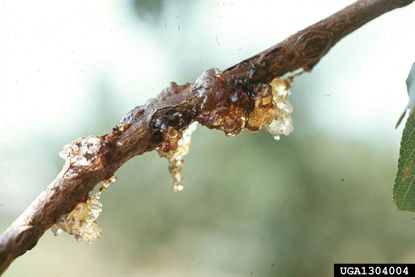

In many parts of the country, it's not summer until peaches and nectarines start to ripen on local fruit trees. These tart, sweet fruits are loved by growers for their orange flesh and their honey-like fragrance, capable of overpowering all the other produce smells at the market. But what if your fruits aren't perfect, or worse, your nectarines are oozing from their trunks, stems or fruits? Read more to learn about oozing nectarines.
Why a Nectarine Tree Oozes
Nectarine fruit oozing is caused by a couple of major offenders -- primarily environmental problems and insect pests. Sometimes, oozing nectarines aren't cause for alarm, since it can be a natural part of the ripening process, but it can also be a sign that the tree isn't getting adequate care.
Environmental issues
Improper care - Be sure to provide your fruiting nectarine with plenty of water during dry periods, adding mulch when necessary to help even the moisture levels out. A 10-10-10 fertilizer should be broadcast in a 2-foot (60 cm.) circle around the tree, leaving 6 inches (15 cm.) around the trunk unfertilized, as blooms are opening in early spring. Frost damage - Frost damage can cause nearly invisible cracks that cause sap oozing in nectarines as temperatures climb in the spring. There's not much you can do about these cracks, except to provide your plant with excellent care and paint the trunks white in the fall, once cracks have healed. The lighter coloration protects against frost damage, though may not help much during a very hard freeze. Canker-causing pathogens often enter through cracks in the bark and may develop after penetrating frost damage. A variety of fungi and bacteria invade the tree, causing thick sap to ooze from an often brown and wet-looking depression. Cankers can be pruned out, but you must be sure to cut at least six inches (15 cm.) into clean wood to prevent them from spreading further.
Insect pests
Fruit moths - Oriental fruit moth larvae burrow into fruits, often from the stem end, and feed around the pit of the fruit. As they break down tissues, excrement and rotting fruit may drip out of tunnel openings located on the underside of the fruits. Once they're inside, your only option is to destroy infected nectarines. The insect parasite Macrocentrus ancylivorus is a highly effective control for fruit moths and can prevent them from entering fruits. They're attracted to large stands of sunflowers and may be held in the orchard year round with these plants, provided you don't kill these beneficial insects with broad-spectrum pesticides. Stink bugs - Stink bugs are less likely to surprise you with sudden damage of ripe fruits; they often begin attacking fruits while they're green, leaving small, blue-green spots where they've been sucking sap. The flesh will turn corky as it matures or may be dimpled, and gum may ooze from feeding sites. Keep weeds mowed to discourage stink bugs and hand pick any bugs that you see. Indoxacarb can be used against stink bugs and is relatively safe for beneficial insects. Borers - Borers are drawn to trees that are already sick, especially when the problem creates openings in the tree's bark. There are many different species of borers on nectarines, with peach borers most prevalent, but they're all somewhat difficult to control because they spend much of their lives inside the tree. When small holes are noticed in limbs, twigs, or branches, you may be able to save the tree by pruning them out. There's no safe and effective control for borers that are already deeply ingrained in the trunk. Mating disrupters are used in some commercial settings, but won't impact all borer species.
Gardening tips, videos, info and more delivered right to your inbox!
Sign up for the Gardening Know How newsletter today and receive a free download of our most popular eBook "How to Grow Delicious Tomatoes."

Kristi Waterworth was a regular contributor to Gardening Know How for many years, answering countless queries on plant pests and diseases.
-
 Want a Backyard Mini Orchard? Create Your Own Container Orchard
Want a Backyard Mini Orchard? Create Your Own Container OrchardEasier to care for in small spaces, a backyard mini-orchard makes sense for busy gardeners and juicy fruit is the reward.
By Teo Spengler
-
 Urban Beekeeping Guide: Top Tips For Raising Bees In The City
Urban Beekeeping Guide: Top Tips For Raising Bees In The CityUrban beekeeping can be a rewarding and appreciated pastime, but first be sure it’s legal in your city and learn the ropes of beekeeping.
By Mary Ellen Ellis
-
Panamint Nectarine Fruit: Caring For Panamint Nectarine Trees
Panamint nectarine trees are very adaptable for home gardens and produce fruit with an excellent flavor. For more information about Panamint nectarine fruit, plus tips on caring for Panamint nectarines, the following article will help.
By Teo Spengler
-
Southern Belle Nectarines: Learn About Southern Belle Tree Care
If you love peaches but don’t have a landscape that can sustain a larger tree, try growing a Southern Belle nectarine. With its fairly diminutive height, the nectarine ‘Southern Belle’ can be container grown easily. Learn more about this fruit tree in the following article.
By Amy Grant
-
 Nectar Babe Nectarine Info – Growing A Nectarine ‘Nectar Babe’ Cultivar
Nectar Babe Nectarine Info – Growing A Nectarine ‘Nectar Babe’ CultivarAccording to Nectar Babe nectarine information, these are natural dwarf trees, but grow full-size, luscious fruit. You can start growing Nectar Babe nectarines in containers or in the garden. Click here for info on these unique trees plus tips on planting.
By Teo Spengler
-
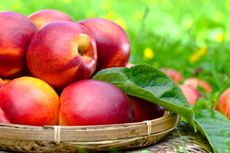 Harko Nectarine Care: How To Grow A Harko Nectarine Tree
Harko Nectarine Care: How To Grow A Harko Nectarine TreeThe Harko nectarine is a Canadian variety high on taste and cold tolerant. If you want to grow this nectarine tree, it’s important to have some facts at your fingertips. Click here for information about growing Harko nectarines and tips about Harko nectarine care.
By Teo Spengler
-
 Arctic Rose Nectarine Care: What Is An Arctic Rose Nectarine
Arctic Rose Nectarine Care: What Is An Arctic Rose NectarineIf you are considering growing peaches or nectarines in a backyard orchard, Arctic Rose white nectarine is a great place to start. Click on the following article for information about this interesting cultivar, plus tips on Arctic Rose nectarine care.
By Teo Spengler
-
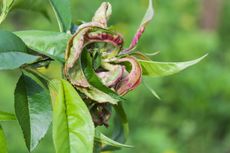 Diseases Of Nectarines: How To Spot Common Nectarine Diseases
Diseases Of Nectarines: How To Spot Common Nectarine DiseasesNectarine disease symptoms may not be readily apparent, and you may have to do some serious observation to locate issues. Others are visually evident and not hard to identify. If your nectarine tree is looking or performing differently than in years past, this article can help.
By Becca Badgett
-
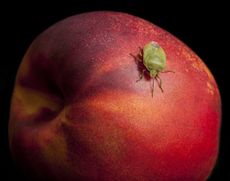 Bugs That Eat Nectarines – Tips For Controlling Nectarine Pests In Gardens
Bugs That Eat Nectarines – Tips For Controlling Nectarine Pests In GardensNectarines and peaches are often used interchangeably in cooking. Not surprisingly, both often face the same pests in the garden. Controlling nectarine pests in the home orchard will help to maintain plant vigor and prevent future pest problems. Learn more here.
By Tonya Barnett
-
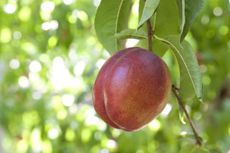 Nectarine Tree Not Fruiting – How To Get Fruit On Nectarine Trees
Nectarine Tree Not Fruiting – How To Get Fruit On Nectarine TreesGetting no fruit on the nectarine trees? If there are no obvious diseases or insect pests, why is the nectarine tree not fruiting? There are quite a few reasons for a fruitless nectarine tree. Find out how to get fruit on nectarine trees in this article.
By Amy Grant